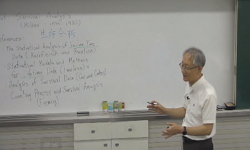With the enhancement of the spatial resolution of satellite imagery (1 m or less), the satellite image analysis has been considered as the indispensable means for remote sensing of nuclear proliferation activities in the restricted access areas such a...
http://chineseinput.net/에서 pinyin(병음)방식으로 중국어를 변환할 수 있습니다.
변환된 중국어를 복사하여 사용하시면 됩니다.
- 中文 을 입력하시려면 zhongwen을 입력하시고 space를누르시면됩니다.
- 北京 을 입력하시려면 beijing을 입력하시고 space를 누르시면 됩니다.
Systematic Change Detection With Spectral Similarity Measures of SID for Uranium Tailing Piles to Monitor Suspicious Mining Activities in the Pyongsan Uranium Mine
한글로보기https://www.riss.kr/link?id=A108974039
- 저자
- 발행기관
- 학술지명
- 권호사항
-
발행연도
2022
-
작성언어
English
- 주제어
-
KDC
559
-
자료형태
학술저널
-
수록면
64-64(1쪽)
- 제공처
-
0
상세조회 -
0
다운로드
부가정보
다국어 초록 (Multilingual Abstract)
With the enhancement of the spatial resolution of satellite imagery (1 m or less), the satellite image analysis has been considered as the indispensable means for remote sensing of nuclear proliferation activities in the restricted access areas such as North Korea. Notably, in the case of an open-pit uranium mine, e.g. the Pyongsan uranium mine, the mining activity can be presumed if detecting the location and extent uranium tailing piles near shafts within temporal images. Several studies have researched on the target detection for minerals of interest such as limestone and coal to evaluate the economic activities by utilizing similarity measures, e.g., a spectral angle mapper and a spectral information divergence (SID). Thus, this paper presented a systematic change detection methodology for monitoring the uranium mining activity in the Pyongsan uranium mine with a similarity measure of SID. The proposed methodology using the target detection results consists of the following five steps. The first step is to acquire stereo images of areas of interest for change detection. The second step is to preprocess the stereo images as following measures: (i) the QUick Atmospheric Correction and the image-to-image registration with ENVI and (ii) the Gram-Schmidt pansharpening. The third step is to extract spectral information for minerals of interest, i.e., uranium tailing piles, by sampling pixels within the reference image. It is based on the satellite analysis report for the Pyongsan uranium mine by CSIS, which specified the location of the uranium tailing piles. As the fourth step, the target detection for uranium tailing piles was performed through the similarity measure of SID between the extracted spectral information and the spectral reflectance of the image. In the fifth step, the change detection was processed using the multivariate alteration detection algorithm, which compares the target detection results by canonical correlation analysis. Furthermore, this paper evaluated the performance of the proposed methodology with the change detection accuracy assessment index, i.e., the area under a receiver operating characteristic curve. In conclusion, this paper suggests the systematic change detection methodology utilizing time series analysis of target detection for uranium tailing piles, which can save time and cost for humans to interpret large amounts of satellite information at the restricted access areas. As future works, the feasibility of the proposed methodology would be investigated by analyzing distribution of minerals of interest regarding nuclear proliferation at Yongbyon, which has the historical events of suspicious nuclear activities.
동일학술지(권/호) 다른 논문
-
Evaluation of the Corrosion Resistance for Alloy 600 and 617 Against KCl Molten Salt
- 한국방사성폐기물학회
- Choi Su-Ji
- 2022
-
- 한국방사성폐기물학회
- Viktoriya Kim
- 2022
-
- 한국방사성폐기물학회
- Hye Ran Noh
- 2022
-
- 한국방사성폐기물학회
- Jeongmook Lee
- 2022




 코리아스칼라
코리아스칼라


